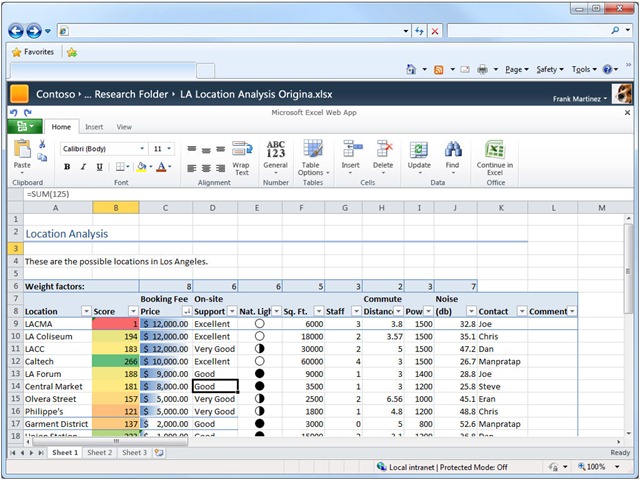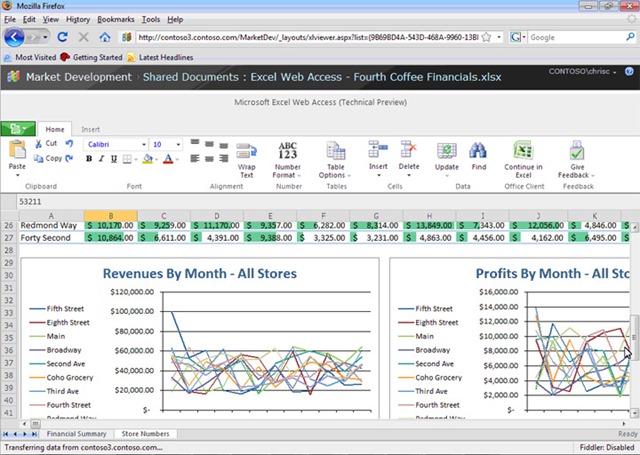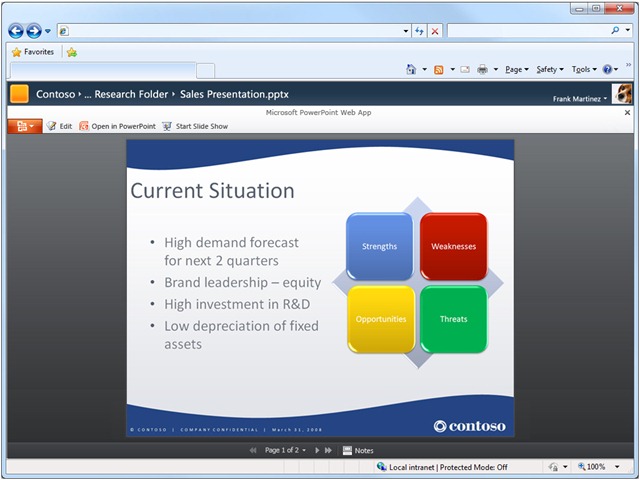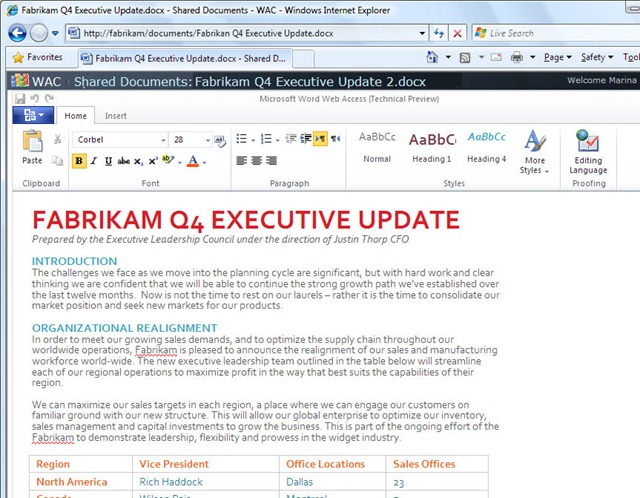Office Web Applications as Native Browser Apps in Microsoft Office 2010
A couple of announcements at the Microsoft Worldwide Partner Conference (WPC09) have been making a lot of noise today. One is the unveiling of the much anticipated Office Web Applications, part of the overall Office 2010 announcements – that Office 2010, SharePoint Server 2010, Visio 2010 and Project 2010 have reached the technical preview engineering milestone.
Unlike the previous online Office service offerings, such as Office Online, Office Live and Office Live Small Business; Office Web Applications are indeed browser-based Office clients. Specifically, Excel, OneNote, PowerPoint, and Word; in addition to Outlook which had the Web Access version for a number of years already.
And as part of Office 2010, Office Web Applications will be available to nearly half a billion customers at launch:
- 400 million users on Windows Live – FREE!
- 90 million Office annuity customers will have access to on-premise deployments
- Office customers will also be able to host and access the Office Web Applications through Microsoft Online Services
A few screenshots below. As you can see, one of the major common themes is that all of the Web Application clients will use the Office Fluent ribbon menu system as well.
Excel Web Application
And in FireFox:
OneNote Web Application
PowerPoint Web Application
Word Web Application
Use Office Anywhere!
The Office Web Applications can be accessed by simply opening the documents as listed on a web page. Even though not just any web page, but can be document folder pages that are hosted in Office Live Workspaces, Windows Live Skydrive, SharePoint Online, on-premise SharePoint Server 2010 instances, etc. Just opening the document (for editing) will open the Office Web Applications in the same browser.
These browser-based clients are considered “basic” cousins to the full desktop client versions. But as you can see, the level of fidelity and richness in the Office Web Applications are actually much better than “basic”. In fact, the included features are quite effective at editing documents from any browser.
Plus some new features in Office Mobile 2010:
- Full compatibility with the Open XML File Formats
- SmartArt Graphics for viewing documents and presentations
- Over-the-air sync for OneNote notebooks
- The ability to sync SharePoint content to the device
This means that, users will have access to, and can use Microsoft Office to edit/modify Office documents anywhere. From the most basic experience, but highest mobility on mobile devices, to most common/streamlined experience on any computer with an Internet connection, and to the richest/professional desktop experience installed locally on your own computer.
Some people may criticize Microsoft for not innovating and still holding on to the desktop dinosaur, but we think a not one-size-fits-all approach, and offering the spectrum of options to use, is actually better for the customer. Someone has used an analogy – trying to fit everything into the browser, and ask all users to use that one model, is like asking everyone to ride mopeds.
Real-Time Collaboration!
In addition to the ability to save/store documents and access/edit them anywhere (cloud, server, desktop, device, etc.), users will also be able to share and collaboratively edit the same document over the network. And this will work access the desktop and browser-based clients. With “fast dynamic sync”, changes from multiple simultaneous users can be synchronized across the group almost instantaneously.
Other new collaboration features include:
- “Automagic” change merging
- Unread change highlighting
- View recent/historical edits
- Author highlighting
- Change versioning and management
Things sure are looking quite interesting with the Office 2010 release.
For more information:




